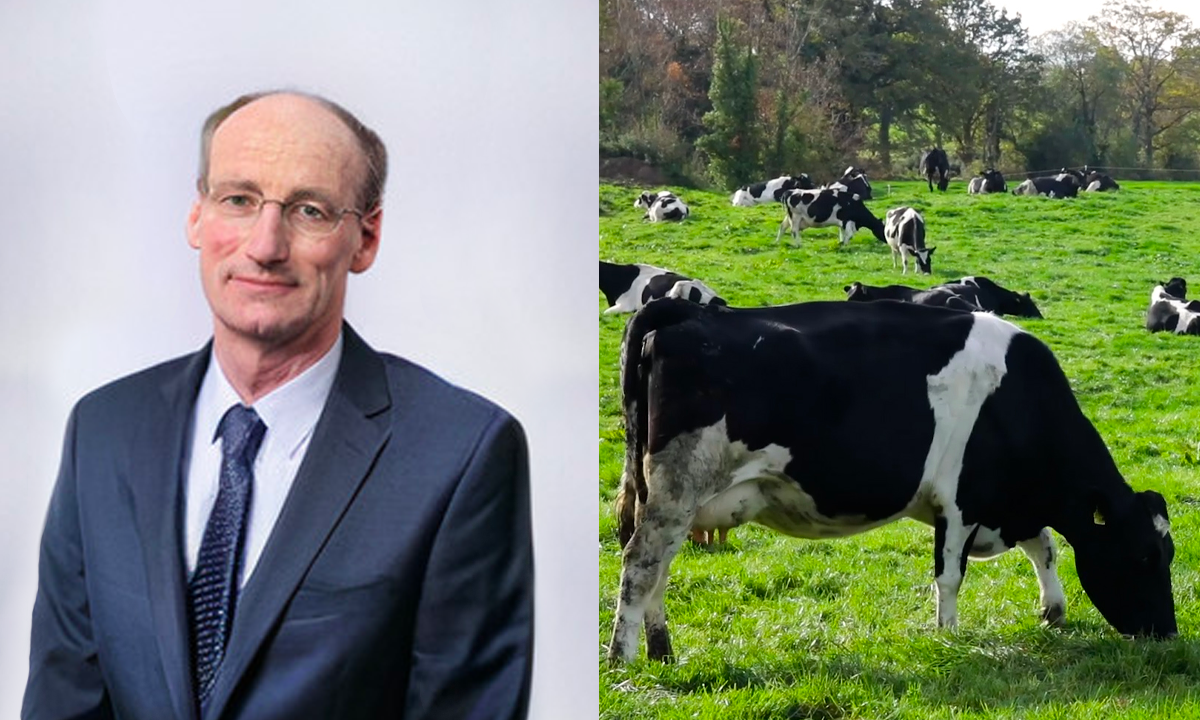Milk price in 2020 remained quite stable throughout the year, with Covid-19 not having as big of an impact as some had predicted.
To obtain some insight into the Irish dairy industry in 2020 and looking forward to 2021, AgriLand spoke to Tom Phelan, dairy chairperson of the Irish Farmers’ Association (IFA).
Milk Price 2020 and Covid-19
Phelan’s review of the milk price in 2020 and the effect Covid-19 had on the sector: ”When the lockdown was announced back in late March there was a massive concern over the milk markets, with some in the industry predicting a fall in prices to as low as the mid-20s.
Thankfully, for Irish dairy farmers that didn’t happen and prices remain quite stable, with similar prices to what was seen in 2019.
”One thing Covid-19 has shown industry is that the routes to market were fragile; that lack of products being seen on shelves concerns consumers. Due to this we’ve seen buyers being prepared to buy more stock and keep more stock on-hand, which they hadn’t been doing prior to Covid-19.
”Global production is up by between 1.5% and 2%, while demand hasn’t matched that, but the fact that buyers are willing to hold more stock has balanced it out.
”I’d almost say that Covid-19 has had a positive effect, which we didn’t expect. Government support globally will have helped this; the uncertainty remains of what will happen once supports have been removed.”
Outlook for 2021
Phelan then gave his outlook for the milk price in 2021: ”From what we are currently seeing, prices should remain stable going forward, but how and when government supports are withdrawn may have an impact.
Some of the recent fixed milk price contracts have highlighted this with prices between 32c/L and 33c/L being offered.
”The vaccine has introduced a certain amount of positivity into all markets, not just the dairy market. With food service opening up again, this should bring a balance to production and consumption.”
Can processors cope with 2021 peak production?
The dairy sector in Ireland has expanded rapidly in the last number of years and it looks like that will continue into 2021; this places pressure on processors to deal with peak milk into the future.
AgriLand asked Tom Phelan for his opinion on this: He said: ”That can only really be answered by the processors, they have managed well so far as milk production nationally has increased.
Peak production is always going to be a challenge in this country from mid-May to mid-June, during which industry usually work together to move milk from plant to plant where spare capacity is available.
”I will say that plants managed peak production at a time when Covid-19 was also peaking very well, we didn’t see the issue that meat factories had occurring in the milk processing plants.
”Farmers played a roll in this as well by ensuring they didn’t put any staff from milk processors that were calling to the farm at risk.”
Spring exports 2021
Looking forward to spring 2021, and the need for Irish calves to be exported to mainland Europe, AgriLand asked Phelan if he could foresee any issue with the exporting of spring-born calves in 2021.
He said: ”There is sufficient lairage capacity in Cherbourg and with ferry sailings every day now instead of every second day, this capacity can be maximised.
”In terms of the veal market in countries like the Netherlands, it is very dependent on the food service industry.
”But with vaccines coming into play in the early months of 2021, February and March-born calves won’t be going to the veal market until six months later; food service should have recovered by that stage in Europe, which will hopefully mean that market conditions will be getting back to normal levels.
”But at this point nothing is certain; the Covid-19 situation has changed before and this could happen again.”
How does the Irish dairy sector fare compared to Europe?
Lastly, Phelan was asked as to how the Irish dairy sector compares to mainland Europe and what has been our competitive advantage?
Ireland has a very good story to tell; we are still very much a family-farm based module, more or less producing milk off grass, which has a very positive image, with industry building on that image.
”It should be noted that production in Ireland has increased by 50-60% since 2015, with markets being found for all this product, which is a great credit to the industry.
”Ireland’s biggest challenge as an island nation is that we export up to 90% of what we produce. Europeans have the advantage of having the market right on their doorstep.
”Compared to mainland Europe we have a lower cost of production, but the cost of production on Irish farms continues to increase, with a milk price that is similar to what we were receiving 25 to 30 years ago.
”Irish farms face increased environmental pressure challenges that will cost money, so it is essential we get a better price for our product,” Phelan concluded.

